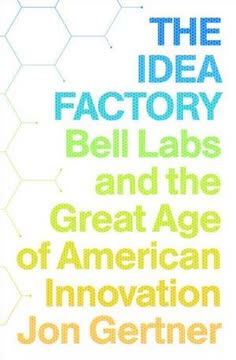Key Takeaways
1. Bell Labs: A Factory for Ideas, Not Just Things
“The men preferred to think they worked not in a laboratory but in what Kelly once called ‘an institute of creative technology.’”
Beyond the Lab. Bell Labs was more than a research facility; it was a place where the line between art and science blurred, where the goal was not just to invent but to create. It was a place where the very point of new ideas was to make them into new things.
Culture of Innovation:
- Emphasis on creative technology, not just science
- Focus on turning ideas into tangible products
- A belief that the line between art and science was not always distinct
A Unique Environment. Bell Labs was a place where imagination was valued and where scientists were paid for their creative abilities. It was a place where the very point of new ideas was to make them into new things.
2. The Power of the Interdisciplinary Team
“The industrial lab showed that the group—especially the interdisciplinary group—was better than the lone scientist or small team.”
Collaboration is Key. Bell Labs fostered a culture of collaboration, bringing together physicists, chemists, engineers, and mathematicians to solve complex problems. This interdisciplinary approach was seen as essential for innovation.
Diverse Perspectives:
- Scientists from different backgrounds working together
- Encouragement of free interchange and close contact among departments
- A belief that the group was better than the lone scientist
The Power of the Group. The industrial lab was a challenge to the common assumption that its scientists were being paid to look high and low for good ideas. Instead, they were looking for good problems.
3. The System: A Problem-Rich Environment
“There is always a larger volume of work that is worth doing than can be done currently.”
The System as a Catalyst. The vast and complex nature of the Bell System created a constant stream of problems that needed solutions. This "problem-rich environment" fueled innovation and drove the need for new technologies.
Constant Improvement:
- The system required constant upgrades and improvements
- Engineers were tasked with making the system better, bigger, and cheaper
- The system demanded a never-ending stream of new products
Beyond Functionality. The Bell System was not only about making the phone work; it was also about making it work reliably, economically, and for the long term. This required a focus on durability, quality, and cost-effectiveness.
4. From Vacuum Tubes to Solid State: A Revolution in Miniaturization
“They were awfully hard to make and they broke all the time. He was always hoping there would be something.”
The Limitations of Tubes. Vacuum tubes, while revolutionary, were fragile, power-hungry, and difficult to manufacture. This created a need for a more reliable and efficient alternative.
The Promise of Solid State:
- Solid-state devices offered the potential for smaller, more durable, and more efficient electronics
- Semiconductors, like silicon and germanium, became the focus of research
- The goal was to replace tubes with solid-state switches and amplifiers
A New Era. The shift from vacuum tubes to solid-state devices marked a fundamental change in electronics, paving the way for the miniaturization and portability of technology.
5. The Transistor: A Serendipitous Discovery, Not a Planned Invention
“Of its output, inventions are a valuable part, but invention is not to be scheduled nor coerced.”
The Unexpected Breakthrough. The transistor was not the result of a linear, planned process. It emerged from a combination of basic research, experimentation, and a bit of luck.
The Role of Serendipity:
- The discovery of the transistor was not a direct result of a specific goal
- It was the result of a convergence of people, ideas, and circumstances
- The process was often messy, with failures and unexpected results
The Importance of Openness. The transistor's invention highlights the importance of allowing scientists the freedom to explore, even when the outcome is uncertain.
6. The Importance of Basic Research: Knowledge for the Long Term
“He was perhaps my closest friend. Invariably I would find him in dressing gown, writing pad on his knee and pencil in hand, smoking his pipe and puzzling over his problem.”
Beyond Immediate Application. Bell Labs recognized the value of basic research, even when it had no immediate application to a product or company effort. This focus on fundamental knowledge led to many of the Labs' most important discoveries.
The Value of Curiosity:
- Basic research was seen as a way to expand the boundaries of knowledge
- It was a way to understand the deeper nature of things
- It was a way to provide a foundation for future innovations
The Long View. Bell Labs understood that the benefits of basic research might not be apparent for years or even decades. But they also knew that it was essential for long-term progress.
7. The Paradox of Innovation: Destruction and Creation
“Progress has been made in some fields of technology in a four-year interval that, under the normal conditions of peace, would have required from ten to twenty years.”
The Creative Destruction. Innovation often involves the destruction of old technologies and the creation of new ones. This process can be disruptive, but it is also essential for progress.
The Force of War:
- War accelerated the pace of technological development
- It created an atmosphere of urgency and a willingness to take risks
- It also led to the development of new materials and processes
The Unintended Consequences. Innovation can have unintended consequences, both positive and negative. It can create new opportunities, but it can also disrupt existing industries and social structures.
8. Information Theory: The Language of the Digital Age
“The fundamental problem of communication is that of reproducing at one point either exactly or approximately a message selected at another point.”
A New Way to Think. Claude Shannon's information theory provided a new way to think about communication, focusing on the transmission of information rather than the meaning of messages.
The Power of Bits:
- Information could be measured in bits, a unit of digital information
- All forms of communication could be reduced to a series of 1s and 0s
- This digital approach paved the way for the modern information age
The Importance of Efficiency. Shannon's work also showed how to transmit information more efficiently, by reducing redundancy and using error-correcting codes.
9. The Limits of Management: Genius Cannot Be Scheduled
“In time, the experiment came to work something like this: A researcher would stand in front of a boxlike chamber and spray a fine mist of oil from a tool called an atomizer; he would look through a close-range telescope at the droplets, which were illuminated by a beam of light; he would then turn on the electric plates and measure (stopwatch in hand) how the oil drops behaved—how long it took for them to move down or up in their suspended state—and write down the observations.”
The Unpredictability of Genius. While management can create an environment that fosters innovation, it cannot control the creative process. Genius often operates on its own schedule.
The Importance of Freedom:
- Scientists need the freedom to explore their own ideas
- They need the time and space to pursue their curiosity
- They need to be free from the constraints of rigid management structures
The Role of the Instigator. Sometimes, the most important thing a manager can do is to identify and support talented individuals, and then get out of their way.
10. The Unintended Consequences of Innovation: A Double-Edged Sword
“Our job, essentially, is to devise and develop facilities which will enable two human beings anywhere in the world to talk to each other as clearly as if they were face to face and to do this economically as well as efficiently.”
The Promise and Peril. While technology can bring people together, it can also create new forms of isolation and distraction. The same technologies that connect us can also be used to control and manipulate us.
The Need for Balance:
- Innovation must be guided by ethical considerations
- We must be aware of the potential for unintended consequences
- We must strive to use technology to improve human lives, not diminish them
The Enduring Questions. The story of Bell Labs reminds us that technology is not a neutral force. It is a tool that can be used for good or ill, and it is up to us to decide how we will use it.
Last updated:
FAQ
What's The Idea Factory: Bell Labs and the Great Age of American Innovation about?
- Focus on Bell Labs: The book chronicles the history and innovations of Bell Labs, a pivotal research and development organization in American technology.
- Key Figures and Innovations: It highlights contributions from figures like Claude Shannon and William Shockley, and innovations such as the transistor and laser.
- Impact on Society: The narrative explores how Bell Labs' work shaped telecommunications and information technology, influencing modern society and the economy.
Why should I read The Idea Factory by Jon Gertner?
- Rich Historical Context: The book offers a detailed account of a significant period in American industrial history, valuable for those interested in technology and innovation.
- Inspiring Stories: It presents stories of scientists overcoming challenges to achieve breakthroughs, adding depth to the narrative.
- Lessons on Innovation: Readers can learn about fostering innovation and collaboration, applicable in various fields today.
What are the key takeaways of The Idea Factory?
- Collaboration is Crucial: Significant innovations often arise from collaborative efforts rather than individual genius, as seen at Bell Labs.
- Long-term Vision: A commitment to basic research allowed Bell Labs to develop technologies that transformed industries.
- Adaptation to Change: Organizations must adapt to changing market conditions and technological landscapes, as illustrated by Bell Labs' history.
Who were the key figures in The Idea Factory?
- Claude Shannon: Known as the "father of information theory," his work laid the foundation for digital communication.
- William Shockley: Co-inventor of the transistor, his contributions were pivotal in modern electronics, despite later controversies.
- Mervin Kelly: A leader at Bell Labs, he championed basic research and interdisciplinary collaboration, shaping the lab's culture.
What innovations originated from Bell Labs as described in The Idea Factory?
- Transistor: Invented in 1947, it enabled the miniaturization of circuits and the development of modern computing.
- Laser Technology: Bell Labs' work on masers laid the groundwork for laser technology, impacting telecommunications and medicine.
- Fiber Optics: The development of fiber optic technology revolutionized telecommunications with high-speed data transmission.
How did Bell Labs contribute to wartime efforts during World War II?
- Redirection of Research: Bell Labs focused on military applications, developing technologies like radar and communications systems.
- Collaboration with Government: Worked closely with military officials to create effective solutions for wartime challenges.
- Technological Advancements: Innovations such as the cavity magnetron for radar had lasting impacts on military and civilian technologies.
What challenges did Bell Labs face in the post-war period?
- Transition to Peacetime Research: The lab had to pivot from military projects to civilian applications, rethinking research priorities.
- Market Competition: New competitors in the electronics industry posed challenges, necessitating innovation to maintain leadership.
- Need for New Technologies: Faced pressure to develop new technologies, like the transistor, to meet growing market demands.
How did the breakup of AT&T affect Bell Labs as described in The Idea Factory?
- Loss of Funding: The breakup reduced financial resources, forcing the lab to adapt to a competitive environment.
- Shift in Focus: Bell Labs had to focus on more immediate, market-driven projects, impacting innovation types.
- Cultural Changes: The collaborative culture altered as Bell Labs became part of a larger, fragmented corporate structure.
What is information theory, and why is it important according to The Idea Factory?
- Definition of Information Theory: Developed by Claude Shannon, it quantifies information and addresses efficient transmission over communication channels.
- Applications in Technology: Foundational for modern telecommunications, data compression, and error correction in digital communications.
- Broader Implications: Influences fields beyond engineering, including computer science and cognitive psychology.
How did Bell Labs contribute to the development of fiber optics?
- Research and Innovation: Engineers worked on creating high-quality glass fibers for long-distance light signal transmission.
- Collaboration with Corning: Partnered to share patents and advancements, leading to breakthroughs in clarity and efficiency.
- Future of Telecommunications: Enabled higher capacity and faster data transmission, foundational to the modern internet.
What role did government and military funding play in Bell Labs according to The Idea Factory?
- Support for Research: Provided essential funding for projects, especially during World War II, allowing advanced research.
- Influence on Innovation: Military needs shaped research direction, leading to innovations in radar and communications.
- Post-War Transition: Navigated the shift from military contracts to commercial projects, impacting long-term strategy.
What are the best quotes from The Idea Factory and what do they mean?
- “The impossible is not impossible”: Reflects the mindset of pushing boundaries and the importance of ambition in scientific inquiry.
- “Innovation is not just about technology”: Emphasizes aligning technology with market needs and societal impacts for true transformation.
- “We build for the day and not for the ages”: Highlights the transient nature of technological advancements within a historical context.
Review Summary
The Idea Factory is a fascinating account of Bell Labs' history and innovations. Readers praise Gertner's thorough research and engaging storytelling, highlighting the lab's revolutionary inventions like the transistor and information theory. The book explores the unique environment that fostered innovation and the brilliant minds behind it, such as Claude Shannon and William Shockley. While some found it dense or lacking in certain areas, most reviewers appreciated the insights into Bell Labs' impact on modern technology and its eventual decline.
Similar Books

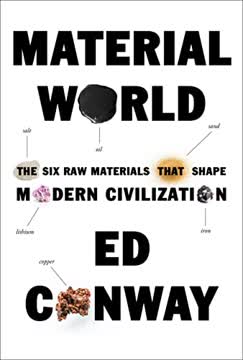


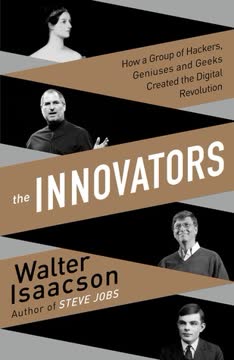
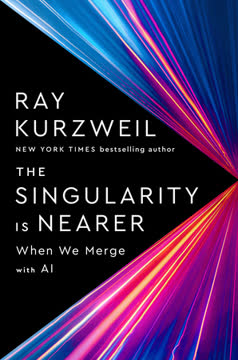
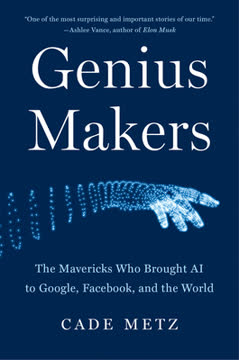


Download PDF
Download EPUB
.epub digital book format is ideal for reading ebooks on phones, tablets, and e-readers.
